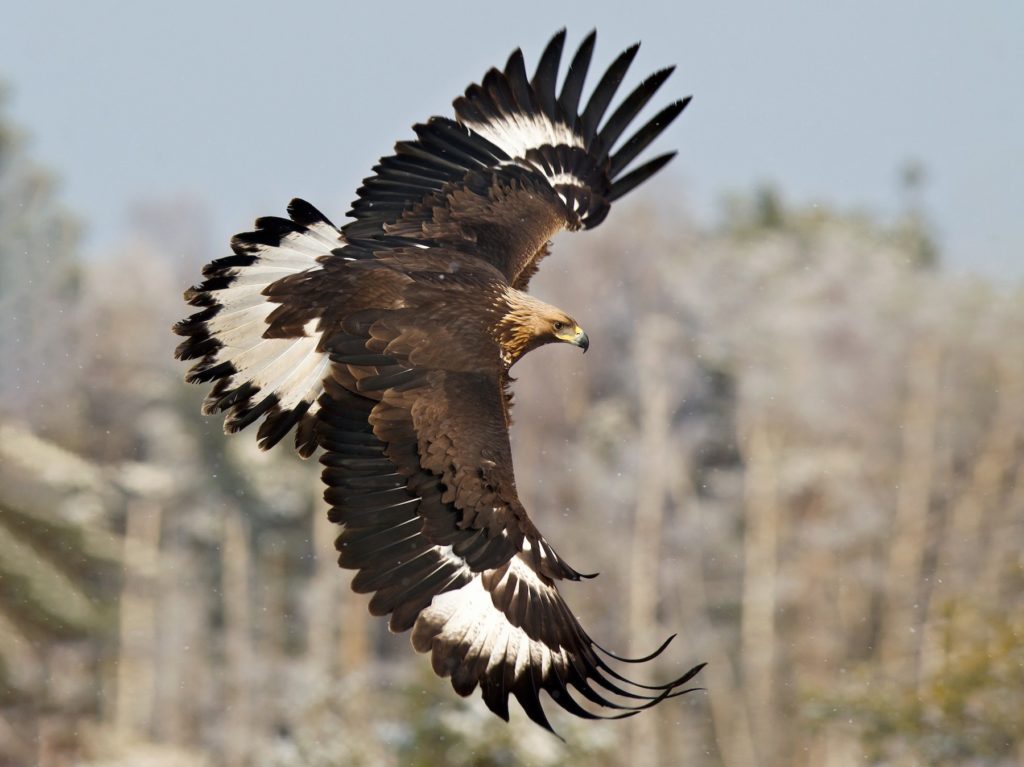
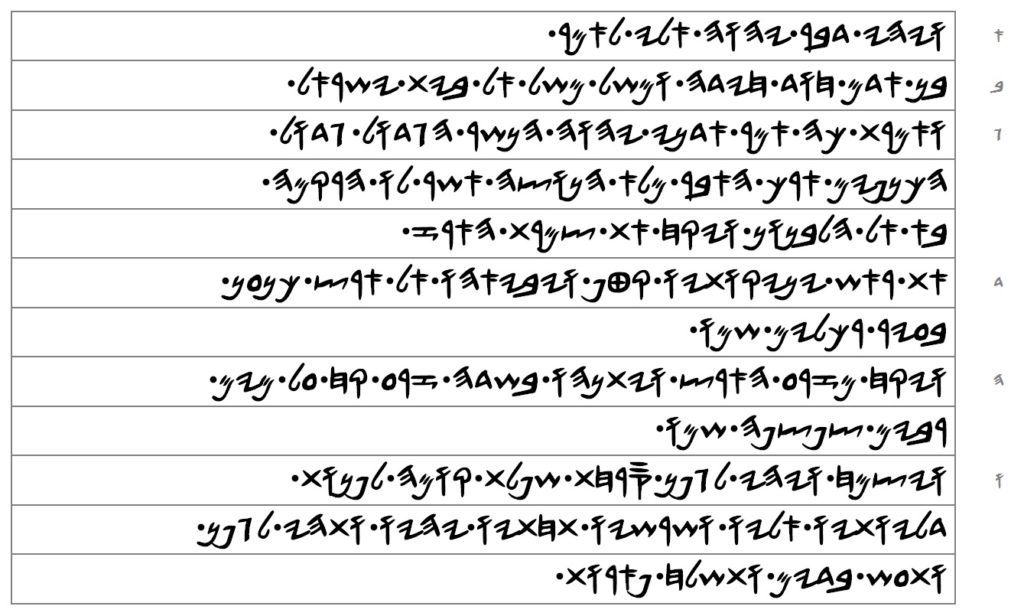
[1] And it came to pass the word of YA’OH to me, saying:
[2] Son of man, riddle a riddle and parable a parable to the House of Ya’oh-shar-al.
[3] And you will say: Thus says Lord YA’OH, the great eagle, great of the wings, long of the wing, full of feathers, which had to him the broidered work, he came to the Labanon, and he took the topmost of the cedar tree.
[4] The head of its twigs he chopped off, and he caused it to be brought to the land of Chanain; into a city of traffickers he put it.
[5] And he took from the seed of the land and he planted it in a field of seed. “Take you beside great waters oh overhanging vine.” He set it.
[6] And it grew, and became for a vine spreading forth, short of height, turning its boughs unto Him, and its roots underneath Him they were, and it became for a vine, and it made branches, and it sent forth sprigs.
COMMENTARY OF YA’OH-KHAZAK-AL (Ezekiel) 17:1-6
A lot of detailed history has to be covered in order to understand Ya’oh-khazak-al chapter 17. Unless one takes the time to become familiar with the history one will not be able to unravel the riddle and the prophecy contained in it. The prophet Ya’oh-khazak-al was a priest who lived and prophesied in exile in Babylonia during the 6th century BCE. The symbolism of this first part of the riddle in verses 1-6 has been supposed by heathen commentators of the bible to reflect the captivity of which Ya’oh-khazak-al was himself one of the victims when the Babylonian King Nabochadnezzar II (605-561 BCE) dethroned King Ya’oh-yachayn (Jehoiachin) of Ya’ohdah in 597 BCE; but this supposition is without any real tenable ground.
The Babylonian Chronicle 24 (rev. ll. 11′–13′) records that Nabochadnezzar II marched to Ya’ohdah in 598 BCE during the ninth Babylonian month of Kislimu.[1] The city of Yaroshalam was captured three months later on the Babylonian date of Addaru 2 in 597 BCE. Nabochadnezzar II dethroned King Ya’oh-yakaym (Jehoiakim) of Ya’ohdah at this time and installed his son Ya’oh-yachayn (Jehoiachin) as king. This was at the end of Nabochadnezzar II’s Year 7 when 3,023 of our people, who were called Ya’odi [2] by the Babylonians, were deported to Babylon as captives (Yaram-Ya’oh 52:28).
The scriptures report that Ya’oh-yachayn only reigned 100 days (2 Chronicles 36:9) and then the king of Babylon had him and 10,000 more of our people deported to Babylon as well. The prophet Ya’oh-khazak-al was among them. This was now Nabochadnezzar II’s Year 8 (2 Kings 24:12). The author of 2 Chronicles adds further that Ya’oh-yachayn was deported and that Tsadak-Ya’oh (Zedekiah) was placed on the throne of Ya’ohdah by Nabochadnezzar II “at the turning of the year” (2 Chronicles 36:10). In the older heathen studies of the period it was widely assumed that this quasi-ambiguous seasonal reference was alluding to springtime and is the same as the date of Addaru 2 in the Babylonian Chronicle which has already been mentioned.[3] The biblical datum in 2 Kings 24:12 was then thought by these same heathen commentators to contain an error by referring to this date as Year 8 of Nebuchadnezzar II instead of his Year 7.[4] I will prove this assumption to be flawed and that there is no provable error in 2 Kings 24:12.
The calendar of our people is a schematic 364-day calendar which is basically a solar calendar. The pagan Babylonian calendar was a lunar calendar. There are four turning points in the solar year: the spring equinox; the summer solstice; the autumn equinox; and the winter solstice. It is apparent that by resorting to a seasonal reference, the author of 2 Chronicles knew the exact calendar date that Ya’oh-yachayn was dethroned and he deliberately avoided expressing it by month number and day number (information recorded in his sources). This can only be because the day of Ya’oh-yachayn’s deposition fell on a holy day in our calendar. Of the four ordinal months of the 364-day calendar wherein the cardinal turning points of the year fall (months iii, vi, ix, and xii) only month iii contains a holy day, i.e. the Feast of Weeks on iii/15, which is always the first day of the week, or so-called Sunday. In other words, 2 Chronicles 36:10 is not referring to springtime. It is referring to the time of the year when spring is turning into summer.
Nabochadnezzar II removed Ya’oh-yakaym (Jeohiakim) from the throne in the twelfth month of the Babylonian calendar, specifically the second day of the month of Addaru, which converts to Saturday, March 10 (Mar 16 Julian), 597 BCE. Counting forward 100 inclusive days and we arrive at Sunday, June 17 (Jun 23 Julian), 597 BCE for the dethronement of his son and successor Ya’oh-yachayn. This date is a mere week before the summer solstice,[5] well within the margin of error, and iii/15 can only fall on a so-called Sunday in the schematic 364-day calendar. Moreover, 100 days before iii/15 is always so-called Saturday xii/7 in our calendar. Hence so-called Saturday Addaru 2 in Babylonia correlated with so-called Saturday, Month xii, day 7 in Ya’ohdah during the year 597 BCE. This set of precise correspondences provide us with clear and unambiguous proof that the civil calendar of the kingdom of Ya’ohdah was indeed the schematic 364-day calendar and not the heathen’s pagan lunar calendar. The biblical calendar has nothing to do with the moon in the sky and it never did.
| Hebrew Date | Week Day | Event | Babylonian Date | Year of Nabochadnezzar | Gregorian Date |
|---|---|---|---|---|---|
| xii/7 | SAT | Ya’oh-yakaym was killed and his son Ya’oh-yachayn was installed as king | Addaru 2 | 7 | 3/10/597 |
| i/1 | WED | New Year in the Hebrew 364-day calendar | Addaru 27 | 7 | 4/4/597 |
| i/4 | SAT | New Year in the Babylonian lunar calendar | Nisannu 1 | 8 | 4/7/597 |
| iii/15 | SUN | Ya’oh-yachayn was dethroned after 100 days | Simanu 13 | 8 | 6/17/597 |
In the riddle the great eagle comes to Labanon (Lebanon) and takes the topmost of a cedar tree and brings it to the land of Chanain (Canaan). The figure of the eagle, or ravenous bird of prey, applied to a conqueror making a rapid descent to invade a country, has as little in it of a specifically Babylonian character as the comparison of the chosen people led by a prophet to the topmost of a cedar tree. Mashah (Moses) described the watchfulness of our Higher Power over His people as bearing them upon the wings of eagles (Thorah 2.19:4; Thorah 5.32:11). The cedar of Labanon and the vine are genuine Ya’oh-shar-alay (Israelite) figures, but the great eagle in this riddle is not to be confused with King Nabochadnezzar II. The great eagle is Mashah the prophet of YA’OH. Labanon and the cedar tree are symbolic of Matsraym. The topmost of the cedar refers to the chosen people of Ya’oh-shar-al who were slaves in Matsraym until the great eagle led them out of the house of bondage in the Exodus. YA’OH subsequently planted His people in the land of Chanain where they flourished into an overhanging willow vine beside abundant waters. Verse 5 is talking about how certain seed of the people became kings and how a kingdom was established after the people had been planted in the land of Chanain.
The riddle is saying that in the beginning the vine was loyal to its Maker and turned its boughs to Him, which was for the most part true of the early generations of Ya’oh-shar-al, less so for the ones who left Matsraym in the Exodus under Mashah and died in the wilderness, but more so for those who were led by Ya’ohshai (Joshua) during the victorious Conquest of the holy land. The United Monarchy of Ya’oh-shar-al was also loyal in the beginning. However, if the eagle in the riddle is symbolic of King Nabochadnezzar II instead of the prophet Mashah, and if the vine is symbolic of King Tsadak-Ya’oh (Zedekiah) instead of the Exodus, the Conquest, and the United Monarchy generations, then there are major conflicts. Tsadak-Ya’oh was plotting rebellion against Nabochadnezzar II from the very beginning of his reign (Yaram-Ya’oh 27:1-3). He was never loyal to Nabochadnezzar II. Nor did Nabochadnezzar II take Tsadak-Ya’oh from one land and bring him to another land in order to make him king. The heathen bible commentaries are wrong. In Ya’oh-khazak-al 17:1-6 the prophet’s riddle is not talking about King Tsadak-Ya’oh who was put on the throne of Ya’ohdah by Nabochadnezzar II king of Babylon in 597 BCE when the year was turning from spring into summer.
Mashah the great prophet was the great eagle, great of the wings, long of the wing, full of feathers which had to him the broidered work because of the mighty and variegated works YA’OH did through him. This verse is not talking about a bird of prey with different color feathers. It is talking about a bird of prey with feathers of broidered work and the broidered work stands for the variegated signs and wonders that Mashah performed by the power of YA’OH, signs and wonders which have had long range consequences, just as the eagle is long of wing, meaning it is able to fly great distances in a single day.
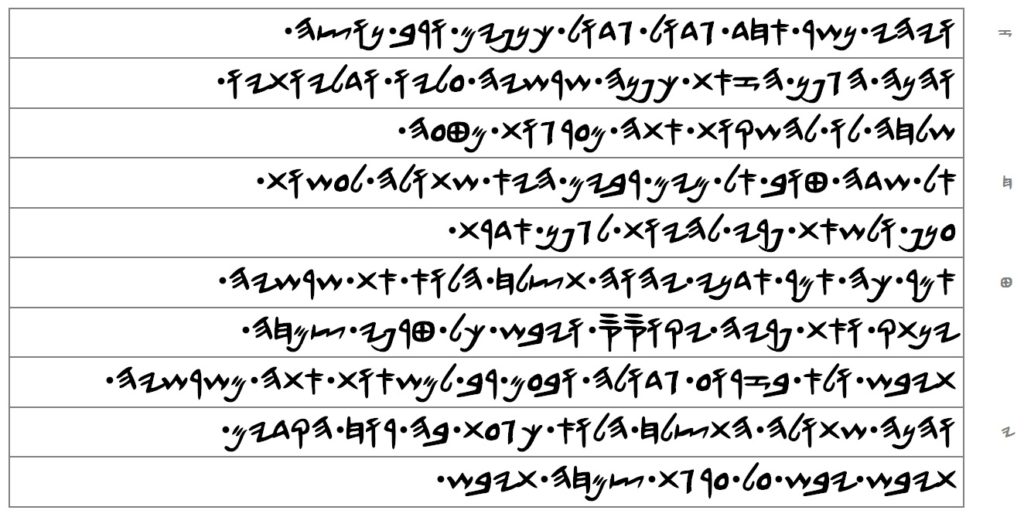
[7] And there was one great eagle, great of wings, and many feather, and behold, this vine bent its roots toward him, and sent for its boughs to him to water it by the furrows of its plantation.
[8] To a good field, to great waters it had been planted to make boughs, and to bear fruit, to be for a glorious vine.
[9] Say: Thus says Lord YA’OH: It will prosper? Will not He pull up the roots thereof? And its fruits He will cut off and He will let wither? All the blossoms of its growth will it wither, and without a strong arm, or by a great nation to pluck it from its roots.
[10] And behold, being planted will it prosper? Will it not when it is touched by the wind of the east wither? Withering upon the furrows of its growth will it wither.
COMMENTARY OF YA’OH-KHAZAK-AL 17:7-10
The first eagle is the prophet Mashah. The second eagle in the second part of the riddle is a Pharaoh of Matsraym. What is said in verse 8 is what happened as a result of what Mashah was called to do in the 15th century BCE. Our people were delivered from bondage in Matsraym and they were planted in the good field, the promised land flowing with milk and honey. What is said in verse 7 is what was happening when the prophet Ya’oh-khazak-al was writing his book in the 6th century BCE. The vine that was planted in the promised land in the 15th century BCE was turning its boughs and branches back towards Matsraym and to the reigning Pharaoh of the 26th Dynasty in the time of the prophet Ya’oh-khazak-al. The riddle affirms in verse 8 that there was no legitimate reason for this pining and stretching out of the vine’s branches towards the second eagle, inasmuch as the vine already had everything it needed to thrive very well in the place where it was planted. The latter is expressly stated earlier in verse 5, namely that there was plenty of water in the land where the vine was planted in order for it to grow and to prosper.

But, asks YA’OH via His prophet Ya’oh-khazak-al in verse 9, will the vine prosper by rebelling from its Maker who is the Lord of the first eagle? The imperfect verb thatsalakh (תּצלח) “it will prosper” is intended to be a rhetorical question, in the third person, feminine singular. This question is answered in the negative by the following question, which is introduced with an affirmative halo’ (הלוא) “will he not”. The Lord of the first eagle will have the vine pulled up by its roots, cut off its fruits, and let it whither. It will not even be necessary to summon forth a strong arm or a great nation in order to pluck the vine up from its roots. According to verse 10, the mere touch of the east wind alone will be enough to make the vine wither away and die in the very place where it was planted in the 15th century BCE.
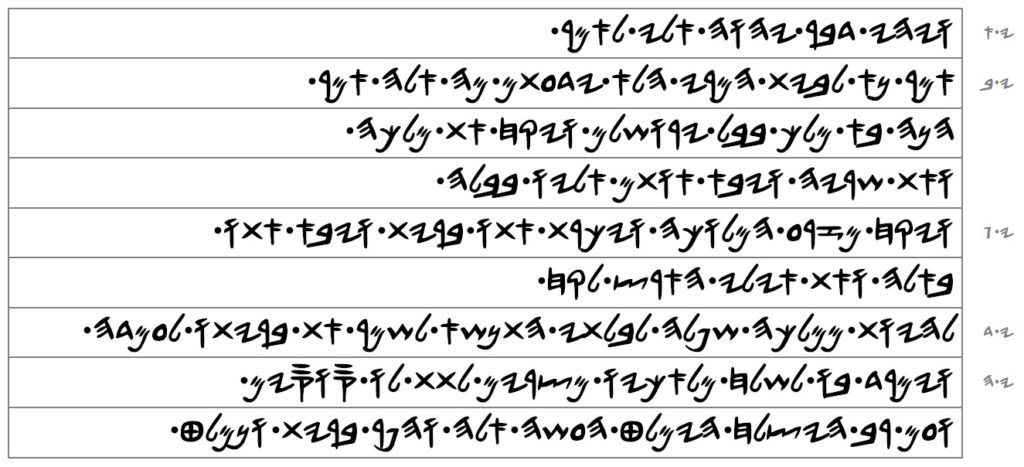
[11] And there was the word of YA’OH unto me, saying:
[12] Say now, to the house of the rebellious: Don’t you know what are these? Say: Behold, the king of Babal came to Yaroshalam, and he took its king and its princes, and he brought them unto him to Babal.
[13] And he took from the royal seed, and he cut with him a pact, and he came with him into the oath, and the mighty of the land he took
[14] to be a debased kingdom, to not lift itself up, to keep his pact that it might stand.
[15] But he rebelled against him to send his messengers to Matsraym to give to him horses, and many people. Will he prosper? Will he escape, the one doing these? And will he violate the pact and be delivered?
COMMENTARY OF YA’OH-KHAZAK-AL 17:11-15
The historical background of these verses is clear from the scriptures. Nabochadnezzar II, the king of Babylon, besieged Yaroshalam in 597 BCE and dethroned Ya’oh-yakaym (Jehoiakim). The king of Ya’ohdah was bound in chains in order to carry him off to Babylon (2 Chronicles 36:6), but he died en route beyond the gates of Yaroshalam and had to be buried unceremoniously with the burial of an ass on the spot (Yaram-Ya’oh 22:19). It was the seventh-day shabath, a no-work day of rest (see chart above), which meant that returning the body to Yaroshalam to perform the typically elaborate funeral rights of a royal interment was out of the question. These verses of the riddle do not mention the deportation of Ya’oh-yachayn three months later in the summer of 597 BCE. Nabochadnezzar II did not come to Yaroshalam in person at that time. The servants of Nabochadnezzar II came against Yaroshalam instead (2 Kings 24:10).
The royal seed with whom the king of Babylon made a pact, according to verse 13, was Tsadak-Ya’oh (Zedekiah), the uncle and successor of Ya’oh-yachayn (2 Kings 24:17-20). As was stated earlier, Tsadak-Ya’oh was rebellious against Nabochadnezzar II from the moment he was made king of Ya’ohdah and the servant of Babylon by Nabochadnezzar II. The pact he entered into with Nabochadnezzar II allowed for the kingdom of Ya’ohdah to continue to exist but it would be significantly reduced in terms of man power and its ability to wage war. The word of YA’OH via His prophet Yaram-Ya’oh (Jeremiah) at that time was that Tsadak-Ya’oh must honor the pact and serve the king of Babylon (Yaram-Ya’oh 27:4-17), but Tsadak-Ya’oh refused to listen. Not only that, to make matters worse, the priests and the people transgressed the laws of the holy covenant and polluted the House of YA’OH with the abominations of the heathens (2 Chronicles 36:14).

[16] As live I, says Lord YA’OH, surely if not in the place of the king, the one who made him king, which despised his oath and which violated his pact with him, in the midst of Babal will he die.
[17] And not with a mighty army, and with a great congregation, will he make with him Pharaoh in the war, by throwing up mounts, and by building a fortress to cut off many lives.
[18] And he despised the oath to violate the pact, and behold, he gave his hand and all these has he done. Not will he escape.
COMMENTARY OF YA’OH-KHAZAK-AL 17:16-18
Verse 16 repeats the same threat made in Yaram-Ya’oh 32:4-5; and 34:1-5. Tsadak-Ya’oh was captured by the Babylonian army in 587 BCE and taken captive to Babylon where he died. The Pharaoh of Matsraym did send his army to help Tsadak-Ya’oh against the Babylonians, forcing the Babylonian army to lift the siege of Yaroshalam (Yaram-Ya’oh 37:5-7), but it was not enough to stop the Babylonians from returning to finish what they started. Tsadak-Ya’oh tried to flee but he could not evade being captured.

[19] Therefore, thus says the Lord YA’OH: Live as I, if not my oath which he despised and my pact which he violated, and I give him upon his head.
[20] And I will spread upon him my net, and he will be taken in my trap, and I will cause him to be brought to Babal, and I will plead myself with him there from his trespass which he trespassed against me.
[21] And all his fugitives and all his company by the sword will they fall, and the ones that remain to all the winds will they be scattered. Then you will know that I am YA’OH. I have spoken.
COMMENTARY OF YA’OH-KHAZAK-AL 17:19-21
These verses sum up the collapse of the debased and lowly kingdom of Ya’ohdah in the eleventh year of King Tsadak-Ya’oh in 587 BCE, which was the eighteenth year of Nabochadnezzar II (Yaram-Ya’oh 52:29). In 586 BCE, in the nineteenth year of Nabochadnezzar II, he ordered the House of YA’OH to be burned and the city of Yaroshalam to be utterly destroyed (2 Kings 25:8-21; Yaram-Ya’oh 52:12-14). At this point we need to clear up what heathen bible scholars believe is a discrepancy within the biblical data. The city of Yaroshalam fell to the Babylonians on iv/9 in the eighteenth year of Nebuchadnezzar II in 587 BCE (2 Kings 25:3-4; Yaram-Ya’oh 52:6-7, 29). The temple was destroyed by fire the following year on v/7 in the nineteenth year of Nabochadnezzar II in 586 BCE according to 2 Kings 25:3, 8-9.
There seems to be a glaring three-day discrepancy in Yaram-Ya’oh 52:12 which puts the date of the temple’s destruction by fire on v/10 instead of v/7. This problem is explained in the Jewish rabbinic literature with the implausible scenario whereby the Babylonians supposedly gain entrance to the temple on v/7 but do not set fire to the temple until two days later on v/9 (Tisha B’Av). Then the fire is believed to have burned into v/10 when the temple was finally consumed (B. Ta’anit 29a). The heathen’s conventional wisdom, on the other hand, considers one of the two dates to be a scribal mistake left uncorrected in the manuscript transmission. Both opinions are incorrect.
| Hebrew Date | Week Day | Event | Babylonian Date | Year of Nabochadnezzar | Gregorian Date |
|---|---|---|---|---|---|
| iv/9 | THU | The city of Yaroshalam fell | Simanu 24 | 18 | 7/14/587 |
| v/7 | THU | The House of YA’OH was burned | Abu 10 | 19 | 8/10/586 |
The truth of the matter is that v/7 is the date according to the 364-day calendar and v/10 is the date from the Babylonian calendar. They are the same day but expressed differently in two different calendars. The author of Kings utilized the local 364-day calendar of the kingdom of Ya’ohdah for dating events, whereas the prophet Yaram-Ya’oh gave us one of the Babylonian conversions of these dates. In the year 586 BCE, the tenth day of the fifth Babylonian month of Abu began at sunset on so-called Thursday, August 10 (Aug 16 Julian). The date v/7 in the 364-day calendar always begins on a so-called Thursday morning. Thus the two dates are not in conflict because they overlap and harmonize. For the dates of Nabochadnezzar II’s reign according to the Babylonian calendar, see endnote.[6]
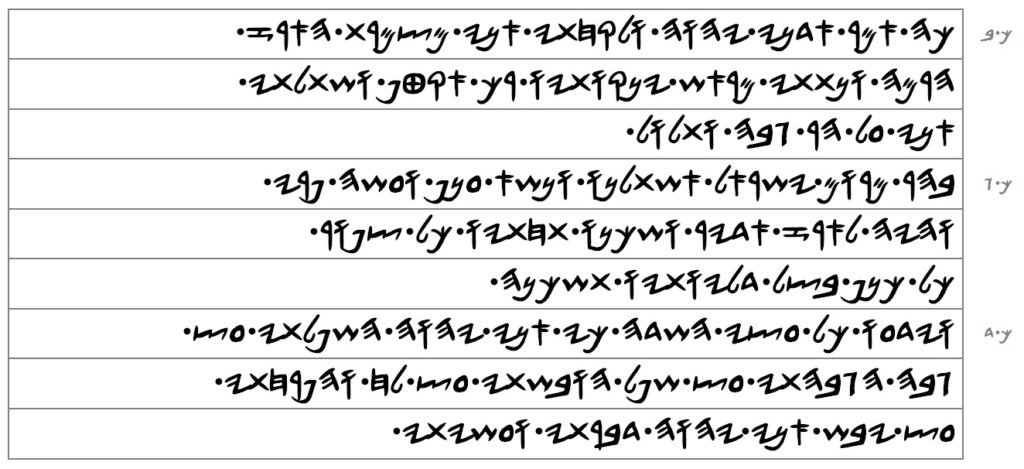
[22] Thus says the Lord YA’OH: I will also take from the topmost of the highest cedar tree, and I will give from the top of its twigs; a tender one will I crop off, and I will plant it upon a high mountain and lofty.
[23] In the mountain heights, oh Ya’oh-shar-al, will I plant it, and it will bear boughs and produce fruit. And it will be for a cedar of glory, and they will dwell beneath it all birds of every wing, in the shadow of its branches will they dwell.
[24] And they will know, all the trees of the field, that I YA’OH brought down low the high tree, and I have exalted the lowly tree. I have dried up the green tree, and I will make to flourish the dried up tree. I YA’OH have spoken and I will do.
COMMENTARY OF YA’OH-KHAZAK-AL 17:22-24
We come now to the end of the prophet’s riddle. So far we’ve seen two eagles in the riddle, but there is a third eagle. The riddle has four parts. The first part of the riddle is in verses 1-6. The second part is in verses 7-10. Both the first and the second parts of the riddle concern an eagle. The first eagle was the prophet Mashah. The second eagle was a Pharaoh of the Saite-based 26th Dynasty in Matsraym. The third part of the riddle is in verses 11-21 where we are given the explanation of the first two parts of the riddle. The fourth part of the riddle is in verses 22-24, and this is where a third eagle comes into view but not explicitly. That is the riddle! In verse 22, when YA’OH states that He is going to take from the topmost of the highest cedar tree, this implies that He intends to use another ravenous bird to soar up to those heights in order to do this, just as He used an eagle to do it at the first time. When the first eagle took from the topmost of the cedar, the cedar tree symbolized Old Matsraym. When the third eagle does the same thing as the first eagle, the highest cedar tree is New Matsraym, i.e. the land of pyramids in the New World, where the strongest nation in human history, the highest and greenest tree ever of all the trees of the field, is situated.

The fourth part of the riddle concerns itself with the final Exodus when YA’OH will use a ravenous bird as His instrument to gather His remnant from the lands where He shipped them in His wrath during slavery and bring them to the second wilderness in the east where He will plant them upon a high and lofty mountain. Verse 23 is the promise that what YA’OH plants this time around will flourish to become the dominant tree in the world. All birds of every wing will seek out this tree and dwell in the shadow of its branches. This is also an allusion to the tabernacle of YA’OH, which is to be a house of prayer for all people (Yashai-Ya’oh 56:7). It will be built in the second wilderness on top of an eminent mountain, and those who fear YA’OH from out of all the nations will flow to it.
In verse 24 we are told that YA’OH will bring down the high and green tree. This is the United States of America, the nation with the most blood of the children of Ya’oh-shar-al on its hands. He will at the same time exalt the lowly and dried up tree. This is the remnant of Ya’oh-shar-al collected out of New Matsraym and brought to the second wilderness. Needy and few in numbers in the beginning, they will multiply in the second wilderness and become a numerous and exceedingly wealthy people (Yashai-Ya’oh 60:22). The Higher Power of Abrahm, of Ya’oh-tsakhak, and of Ya’oh-ghakab, is real and He will do exactly what He said He would do. I would inspire those of you who are His people, descendants of Ya’oh-shar-al, to remember this and to realize what days we are living in now. He is doing what He said and He is doing it as we speak.
His name is YA’OH
Always has been. Always will be.
#EXODUS2023
1.15.7252 (April 5, 2023)
ENDNOTES
1 J.-J. Glassner, Mesopotamian Chronicles, ed. by Benjamin R. Foster (Atlanta: Society of Biblical Literature, 2004): 230–231.
2 The name of the land and the people of Ya’ohdah was rendered Ia-ú-di (phonetically, Ya’o-di) in the Akkadian inscriptions.
3 S. H. Horn, “The Babylonian Chronicle and the Ancient Calendar of the Kingdom of Judah,” AUSS 5 (1967): 12–27; A. Malamat, Israel in Biblical Times: Historical Essays (Jerusalem, 1983 [Hebrew]): 262; A. R. Green, “The Chronology of the Last Days of Judah: Two Apparent Discrepancies,” JBL 101 (1982): 52–73.
4 A. R. Green, “The Fate of Jehoiakim,” AUSS 20 (1982): 103–109.
5 In 597 BCE, the summer solstice occurred on June 23 (Jun 29 Julian).
6 Richard. A. Parker and Waldo H. Dubberstein, Babylonian Chronology 626 B.C. – A.D. 45. SAO 24 (The University of Chicago Press, 1942): 26.

Thaddeus Crawford ADC# 243101
5501 N La Palma Rd.
Eloy, Arizona 85131
WA HALALO YA OH